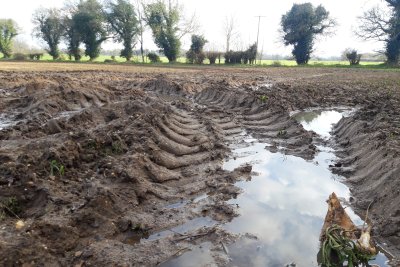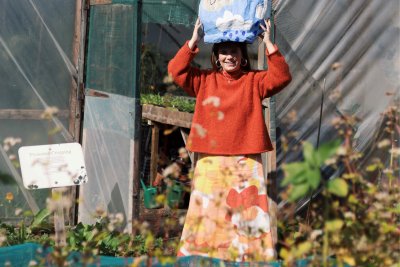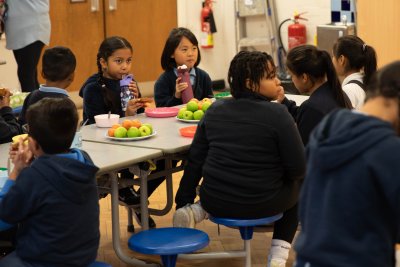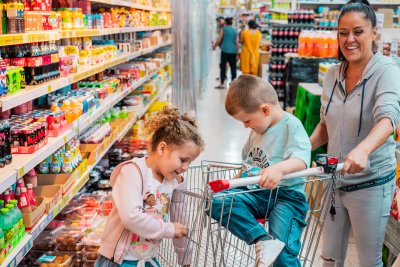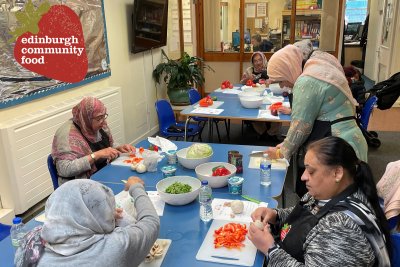Community growers’ top tips: donating fresh produce to foodbanks
As more households are plunged into food insecurity, people increasingly struggle to afford fresh fruit and vegetables. But what do community gardens do when foodbanks are having to return unwanted donations of fresh produce?
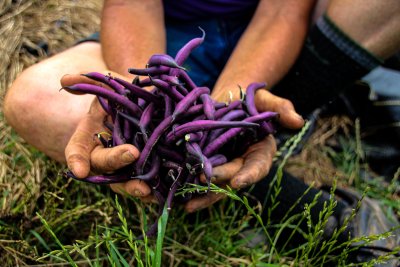
Inflation is soaring, the ‘cost of living’ continues to deepen, and people across the country are being toppled into food poverty. 9.7 million adults and 4 million children were reported to live in food insecure households in October 2022, with worse impacts felt by disabled people, Black people and people of colour. Between April and September this year, the Trussell Trust network of foodbanks saw 320,000 people turning to food banks, who had never needed to before. In this period, the Trussell Trust network alone distributed 1.3 million food parcels, 500,000 of which went to children. This is a 50% increase on the same period in 2019.
A survey by the Food Standards Agency in October 2022 found that 15% of respondents had used a food bank or food charity in the last month, nearly double the number when the tracker started in April 2020. 31% said that they had skipped a meal or cut down the size of their meals in the last month because they did not have enough money. Four in ten people said they felt worried about being able to afford food in the next month, with nearly nine in ten saying they are feeling concerned about food prices.
The number of food insecure households is not only increasing: people are also increasingly struggling to eat a diet that is nourishing. Over one third of people say they can’t afford to eat a healthy, balanced diet, and around half of food insecure households are cutting back on purchases of fruit and vegetables.
Networks of community food growers across the country are rising to the challenge, donating fresh produce to foodbanks in their local area. However, it’s not always straightforward. Foodbanks are used to dealing with non-perishable items, that tend to be simple to prepare and cook or don’t require cooking at all. Fresh vegetables can sometimes be left on the shelves and, with no means to store them, the foodbanks send them back to the gardens. Ever resourceful, community gardeners have found a whole menu of approaches to overcome this difficulty, which we’ve boiled down into six simple tips:
1. Plan, Plan, Plan
In Preston and Hull, the community growers networks have opened up conversations with their local foodbanks about what food is needed when, and in what volumes. They have shared this information with local gardens, created a sowing plan for the year ahead, and Preston have also established a seed library appropriate to what is needed. Hull are encouraging some larger gardens to get involved in the growing plans and donations, so there can be more consistency throughout the season. They’re even starting to develop software to make it easier for the gardens and foodbanks to coordinate supply and demand. Keeping up this communication between gardens and foodbanks through the growing season is invaluable: if you tell the foodbanks what’s coming in advance, they’ve got time to prepare instead of having to be reactive when the donation arrives. This gives them time, for example, to prepare recipe cards.
“Planning is key.” Darren Squires, Hull Food partnership
2. Think about who’s eating the food
Beyond the planning and logistics, it is really important to make sure you’re thinking about the people who will be eating this food. Why is it that they might not be taking the donations? As part of the Community Harvest project in London, which aimed to help community food growing projects to scale up and distribute to foodbanks during the height of the Covid-19 pandemic, surveys were distributed at foodbanks, and garden volunteers went along in person to meet the people using the service. This enabled them to tailor their gardens to more culturally appropriate food growing. Where this wasn’t possible due to the growing conditions or seed availability, they thought about reasonable substitutes and communicated this with the community. In Reading, they mostly donate their fresh produce to organisations that support refugees and homeless people, as they’ve found that the recipients are more interested in taking fresh produce.
3. Upskill and provide inspiration
Being culturally appropriate is not the only thing to consider with food donations. In many cases, it’s been found that providing recipe cards can be a really effective way to improve uptake of fresh produce at foodbanks; either to introduce unfamiliar vegetables, to upskill the community, or simply to provide inspiration. Cookery classes have been found to be an even better solution. In Hull, a school is providing a cooking class every month for all of the parents, and as a result have found there are no issues distributing the fresh vegetables donated by local community gardens. In some cases, a simple rebrand can do wonders: in Derry, changing the name of the ‘Fruit & Veg box’ to the ‘Health Box’ helped fresh produce fly off the shelves.
4. Take the cost of energy into account
Cooking equipment is not always available to everyone, and as energy bills reach dizzying heights, the cost of cooking up a meal is becoming prohibitively expensive for more and more people. Several places have responded by developing low- and no-energy recipes to distribute with their fresh produce donations. This is also something important to consider in sowing plans throughout the growing season: are you growing lots of things that can’t be eaten raw? In Derry and Strabane, the food network have been distributing slow cookers to the community as a low-cost solution to home-cooking for those struggling with energy bills.
5. Make it tasty
A pile of boiled veg is not always appealing. For food donations to be dignified, it helps if they’re delicious. A simple touch of seasoning, herbs or spices can transform an otherwise plain plate of food, but for an individual or household to stock up even a small range of these can be prohibitively expensive. In Reading, a volunteer at a foodbank created a communal binder full of pictures of herbs, explaining what each of them are and providing ideas of how best to use them. They also work with a person who orders spices in bulk and provides small jars at the local foodbank free of charge. In Derry and Strabane, the network of community gardens helps foodbanks to grow their own herbs on site. It’s been found that this also increases the time people spend at the foodbank, increasing the chance to signpost to useful services, and also simply to have conversations with others there.
6. Collaborate with the foodbanks, and strengthen your relationship
Nurturing a good relationship with the people running and working in the foodbanks can be a game-changer: anything to help strengthen that is very valuable. A common understanding between community gardens and foodbanks of their different ways of working, their different complexities and challenges, can help create opportunities to collaborate. In Eastbourne, the foodbanks also had low uptake of fresh produce, but they were able to respond by distributing the fresh donations to community fridges, and they even started providing cookery classes. In other parts of the country, the community growing networks have created opportunities for food banks to get more involved with food growing, and some food growers have volunteered in foodbanks.
If you have any other advice you’d like to share, get in touch.
Sign up to the Good to Grow newsletter.
Published Thursday 1 December 2022
Good to Grow: Good to Grow Day is all about getting people involved in their local community garden. We hold national events across the UK that aim to raise the profile of community gardens and encourage more people to take part.
